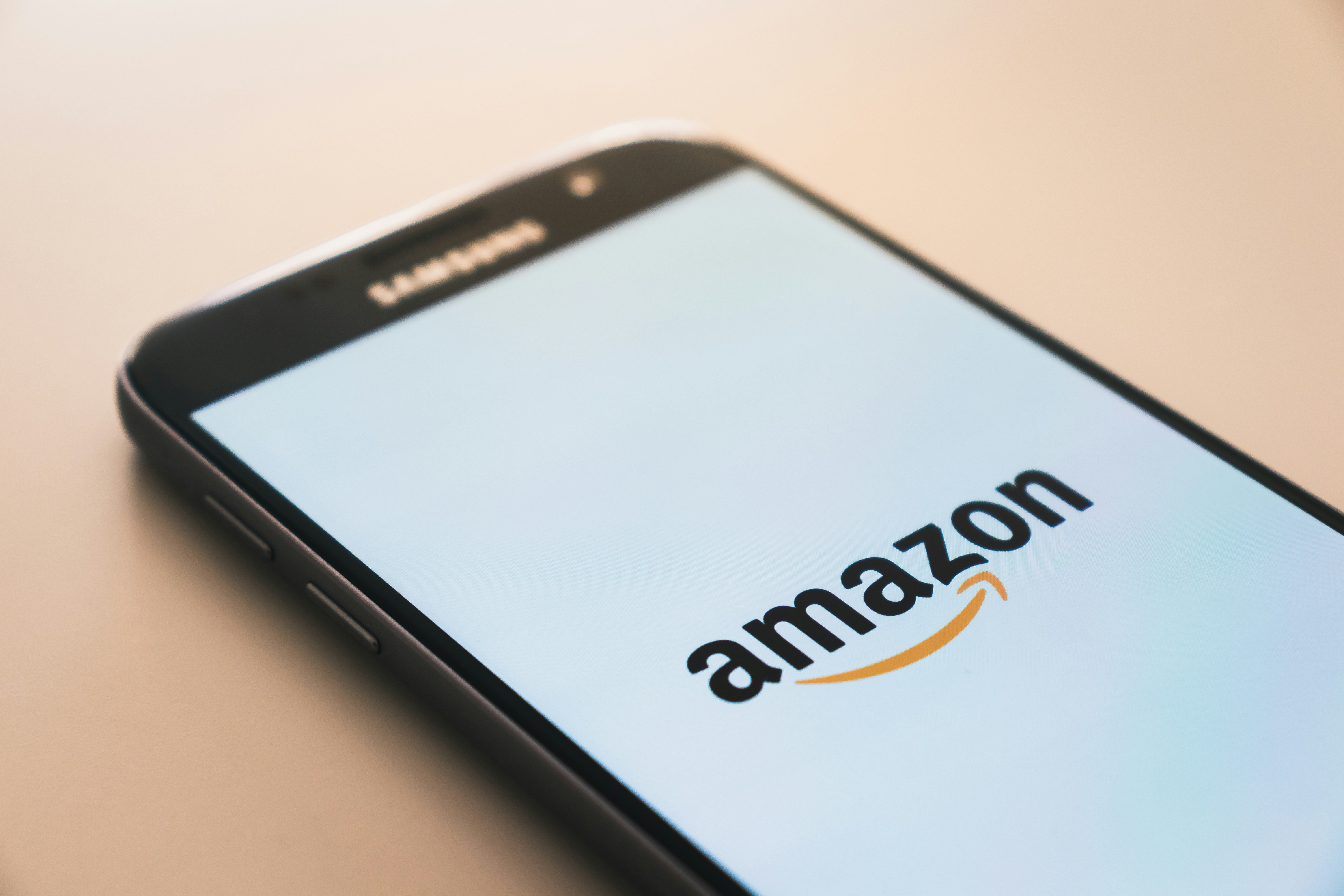FITA INSIGHTS
What Amazon’s Brick and Mortar Retail Revolution Means for Fashion’s Future
By
Sebastian Schulze
Jul 7, 2017
4 min read
Though Amazon’s server empire has been taking centre stage over the last few years, the company remains true to its roots and committed to pushing online retail forward across several fronts. It seems like hardly a quarter goes by without some kind of potentially transformative initiative being announced.
Admittedly, several of these projects are still very much at the exploratory stage of development. To take just one example, Amazon’s ambitious drone programme is not going to be rolling out to major metropolitan areas anytime soon. Make no mistake, however, that day will come. The arrival of one-hour delivery in markets such as New York shows the company is fully focused on doing whatever it takes to make the last-mile problem disappear.
Like any company supporting online retailers and brands, we keep a very close eye on developments out of Seattle and know that where Amazon lead, others will inevitably follow. Their relentless customer advocacy and commitment to making life easier for online shoppers is also a core value that we aspire to emulate at Fit Analytics.
With that in mind, the recent announcement of Amazon Go is something we’ve been mulling over in terms of what it might mean for online retail in general, and the future of fashion in particular. It’s early days for this initiative, but not too soon to see which way the wind is blowing.
In this piece, we’ll step through some of the specific implications Amazon Go has for both Fit Analytics partners and online fashion’s future. Before we do so, however, let’s quickly cover what it’s actually all about for those who are late to the party.
A Brief Introduction to Amazon Go
Amazon’s promo video for their revolutionary new store does an excellent job of introducing the overall concept:
The basic idea here is incredibly simple: Amazon Go is a real-world store where you can walk in the door, select your items, and then leave without having to queue at a cash register or go through bagging. What Amazon is referring to as “Just Walk Out Technology” is powered by a seamlessly integrated mix of computer vision, sensor fusion, and machine learning under the hood, but the pitch to users couldn’t be more straightforward – just “grab and go” and Amazon will take care of the rest.
The solution is currently in beta, with access being restricted to Amazon employees in a single store in Seattle (though it’s scheduled to open its doors to the general public at some stage in early 2017). It’s pretty easy to picture this concept spreading like wildfire after the kinks are ironed out, however. Once you’ve seen the promo video above, the prospect of shuffling through checkout lines or struggling with the current generation of clumsily implemented self-service options seems positively archaic.
Our focus here is fashion, though, and there’s no shortage of potential implications for online apparel brands and retailers as a result of Amazon’s latest offline move. Let’s start breaking down the big ones.
The Retail Future Has to Be Frictionless
No matter where you look across the wider online retail and payments landscape, there’s a huge emphasis on reducing customer pain points and providing a hassle-free shopping experience. Whether it’s Apple Pay, Facebook’s increasingly friendly overtures towards e-commerce, or Microsoft’s ongoing AR/VR push, many of the brightest minds in the industry are doubling down on smoothing the path to purchase for as many people as possible in a variety of creative ways.
Global giants such as Apple are in an arms race around removing retail e-commerce friction.
Amazon, of course, is leading this particular charge, and the pilot phase of Amazon Go shows just how far ahead of the chasing pack they already are in many respects. The harnessing of bleeding-edge technologies to tackle a rock-solid, universal use case in as customer-friendly a way as possible is deeply impressive. It’s also an approach that’s been central to their vision of retail’s future going all the way back to the introduction of 1-click shopping in 1999. This particular train is only going in one direction, and Amazon increasingly look like the company who own the tracks.
The takeaway for fashion brands and retailers here is clear – if you’re not alreadyactively working on removing obvious pain points for customers, it’s time to up your overall game. Customers will only stay loyal to labels for so long, and convenience is going to be king within the next three to five years. Fashion firms are also unlikely to be able to marshall the technological resources to solve problems such as sizing or last-mile delivery on their own – strategic partnerships will be essential.
Omnichannel Is Both Threat and Retail Opportunity
Naturally enough, we’re not the only ones who’ve been considering the implications of Amazon’s latest move. In the course of an excellent piece over at Fieldworks, Chris Field raised a great question for brands and retailers relating to one of the hottest industry themes out there – omnichannel:
Can they identify their customers when they come into their stores in the same simple way Amazon can? No of course they can’t, which is another reminder of the huge hole in almost all retailers’ omnichannel strategies. What happens online stays online. – Chris Field, Fieldworks
The announcement of Amazon Go highlights both the enormous promise of omnichannel and the threats lurking in the wings for companies who don’t get ahead of the game early. On the positive side of the equation, it shows just how compelling a truly integrated omnichannel setup is from a customer’s point of view. It also gives companies a crystal-clear vision of potential business value – the type of full stack shopping Amazon is already trialling is pretty much the stuff of dreams for most online apparel firms with an existing offline presence.
Omnichannel is the elephant in the room for many fashion brands and retailers.
The downside is equally apparent. As Amazon Go shows, omnichannel willhappen – the question as a brand or retailer is how much of the value are you actually going to be able to capture yourself? Companies like Apple and Amazon didn’t get where they are today by freely sharing customer data, particularly when it comes to anything to do with payments. If someone else is providing the payment plumbing for omnichannel integration, you could be left picking up crumbs on your own sales with little or no idea about who you’re actually selling to.
Brands and Retailers Will Be Forced to Genuinely Engage With Their Customers
Our next point is one that’s a particularly huge issue for fashion retail across the board – companies are going to have to engage with their customers on a fundamentally different and deeper level sooner rather than later.
The Amazon Go retail environment, incredibly impressive though it is, is just the tip of a much longer spear relating to customer tracking, targeting, engagement, and retention. To put it plainly, Amazon know who you are, where you are, what you’ve bought, and when you’ve bought it. They can also leverage that data at scale to factor in what people similar to you have done (and are likely to do). The connection with customers is data-driven, personalised, and intimate.
The contrast with the model followed by much of the fashion world (both on and offline) is instructive. Both brands and retailers are spending literally billionstrying to woo an increasingly jaded public without actually engaging with them in many cases. At both the point of purchase and beyond, there’s an often shocking lack of knowledge about the people who are actually buying their clothes. We’ve got a front-row view of this issue in the form of sizing (and a solution to match that genuinely empowers and involves customers), but it’s a problem that manifests itself across the industry.
Billboards and bluster won’t be enough down the road.
Again, the takeaway is relatively simple – if you’re not starting to change the way you interact with your customers, there’s no shortage of voracious competitors with deep pockets out there who are more than ready to take your place. In fairness to the world of fashion, many of its leading lights are – having taken the trouble to expensively acquire them – already making huge efforts to truly engage with customers. Even with brands or retailers who are going above and beyond in this respect, however, the amount they actually know about their customers remains a consistent pain point – which brings us neatly on to our final thought.
Data Will Be the Differentiator
Though there’s an impressive mix of next-generation tech powering Amazon Go, the glue that binds the overall setup is data. As mentioned above, Amazon are second to none with what they know about their own customers – whether considered individually, segmented by group, or en masse. The launch of Amazon Go shows that they’re also increasingly adept at leveraging that data to make customers’ lives easier in revolutionary ways.
There are no two ways about this, the fashion world is going to have to follow that lead. Creative inspiration will always set the tone for the industry, but data and machine learning have advanced to the point where they deserve a seat at the main table. Through our own efforts to help brands and retailers solve sizing, we’ve already seen first-hand just how much upside there is out there for firms who are ready to make the leap. At every single point of the production, retail, and post-sale chain, there are enormous opportunities waiting to be unlocked around data.
We’re also conscious that the industry as a whole is very much at the beginning of making the switch towards a data-driven future, and that there are internal obstacles to be overcome for many companies. Data-driven solution providers such as Fit Analytics have to be prepared to make the case for data, and to back that case up with provable bottom-line impact. That’s a challenge we’re already tackling and looking forward to engaging with more fully in coming months. Brands and retailers, for their part, have to make the time to step back from quarterly concerns and take stock of where the industry as a whole is heading with data. Those who don’t risk being left behind sooner rather than later.
If you’re ready to take the next step towards harnessing the power of big data to help your company solve sizing and boost the bottom line, get in touch with our sales team today for a detailed breakdown of how we can help.
To learn more about how we can help you and support your specific needs Contact us.
































































